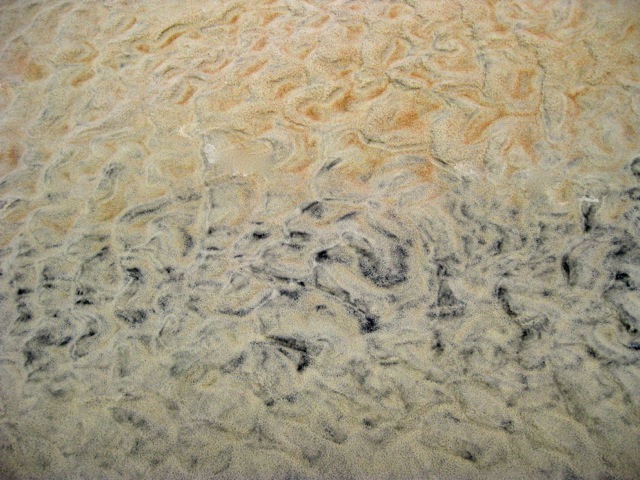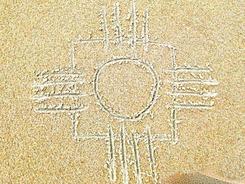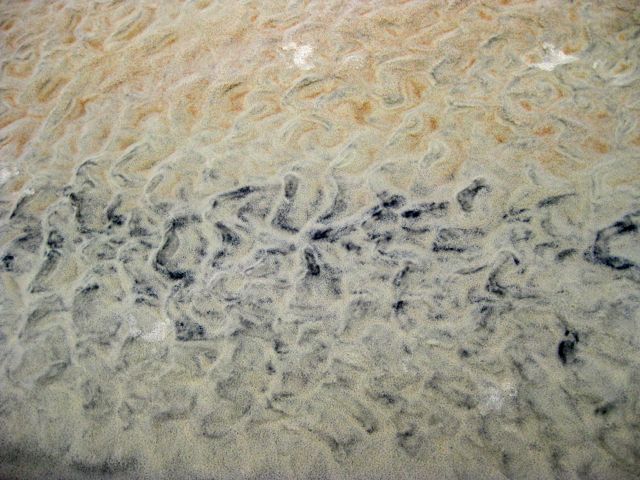Meet the Teachers
Florida Sandplay Therapy Association
SandSearch.org
Interview with Trudy Corry Rankin
by Bunnie Graham
Introduction
Trudy Corry Rankin is a Licensed Mental Health Counselor and a Spiritual Director, practicing in Lakeland, FL. She is a Certified Teaching Member of STA, the treasurer of ISST and a founding member of FSTA. She will be teaching during the first weekend of the Sandplay Therapy Institute along with Lucia Chambers.
Sandplay as Mirror
Bunnie (B): Trudy, thank you for talking with me about sandplay therapy. How did you first become interested in this form of therapy?
Trudy (TCR): Once when I walked by a therapist's office with a sandtray and figures, my initial experience was that my body wanted to get into the tray. I saw it and wanted to sit in the tray! I have experienced life in a six-foot tall body so when I began doing my own sandplay process and put the figures into the tray, I had my first experience of being able to see the essence of me—all of me at once. I liked that experience of being both large and small. When I see myself in a mirror I feel very large! But my first somatic experience of sandplay was that I could put all of me into the tray.
B: It was like seeing a comprehensive view of yourself?
TCR: It was like a mirror of my whole self.
Dora and Healing
B: How did you first come to study sandplay therapy?
TCR: I did not study with Dora herself but went to Switzerland in about 1995 and studied with Dora Kalff's son and daughter-in-law, Martin and Sabine Kalff. The impact of going to the Tibetan meditation center next door and doing art there with Sabine was significant. There was something about doing a combination of the sand with art, and the spiritual dimension of meditation that was very transforming. This brought me into the intuitive aspects of healing that I yearned for. Trained as a nurse, I was oriented to science so I was grateful to get into the world of expressive arts and into spirituality.
Somatic Response
B: Physical reality is important to you. How can you teach somatic awareness to sandplay students?
TCR: Sometimes something will happen in the tray that prompts an emotional response and the client may say, “I feel so shaky right now." Getting into the sand and holding the miniatures causes a connection with feelings and opens the heart space. In teaching it, we have people introduce themselves with a miniature figure they have chosen. They may say, “I feel calm, or scared, or anxious when I hold this figure.” The student immediately realizes that the symbol seems to hold energy and connects with an essence deep within. We can teach the process through immediate experience when the student is aware of how the body gets involved. The client with no physical association, who has never dug into the sand, only thinks about the experience. A therapist must do her own process. It cannot be taught but must be experienced.
Trauma and Metaphors
B: How is sandplay used in treating someone suffering from trauma?
TCR: We now understand that the nonverbal therapies help to heal trauma. Experience with sand has made a significant contribution in the world of traumatic suffering. When one is in deep shock it is hard to use words to describe it, so art or music or nonverbal therapies allow the expression of trauma. Traumatic memories are held in the right side of the brain and we communicate about these memories with the use of metaphors, symbols and imagery. When people were interviewed after 911, they said things like, “It felt like a massive dark intense cloud;” “People were screaming like wailing children;” "The sky was dark as night." Often the expression of feelings is easier with metaphors than rational words. The tray can hold the intensity of feelings that are triggered in the therapy. I had an abuse survivor working in the sandtray. She said that the deep pain that she felt could be contained and managed when she placed the memory in the tray. It was out of herself and no longer held in her body.
Spiritual Direction
B: Besides your work in mental health as a therapist, you are also a Spiritual Director. How do you use sandplay in spiritual direction?
TCR: To understand my spiritual formation has been a desire of my heart since childhood. Jung opened the door to integrating spiritual formation and psychology. I sit with people who want to talk about their journey with God. Sandplay offers them an opportunity to create an altar as an expression of the inner psyche or soul as we sit in silence. The tray adds a way to show many different aspects of what their prayers look like.
B: Then you use the tray as an altar of sorts?
TCR: I feel so honored to be the silent witness to the mystery of Psyche speaking and showing herself in the tray.
B: You are active in ISST, the International Society for Sandplay Therapy.
TCR: Yes, having lived out of the country, I am interested in other cultures. We have an international dialogue happening in sandplay. This makes a rich context for research, mutual understanding, and further development in a variety of languages and cultures. I am very grateful that we are participating in healing work that has an impact in the diverse populations of the world. With sandplay, we can do research from a non-English, nonverbal, expressive position because language is not a barrier. We can communicate through the use of symbols. The desire for a free and protected space is universal.
Therapist as Witness
B: Could you say more about the concept of being a witness to a client's process?
TCR: The aim of the witness is to provide a free and protected space, which can help bring forth creative aspects of life and possibilities for healing. A sandplay therapist's conscious, transparent presence prompts a deep holding energy that feels safe and trustworthy. The ability to do this comes from doing your own inner work. I feel called to hold the process for people. In fact, holding the healing space for others in my office allows me to be deeply affected by the intimacy of co-transference in the relationship.
B: Thank you for talking with me. Are there any last words?
TCR: I am always refreshed to be with sandplay therapists. There is a tamed ego that works in sandplay therapy, because we have touched the spiritual reality of the Self and in that touch we are humbled and nourished.
Fostering growth & healing through symbolic process




